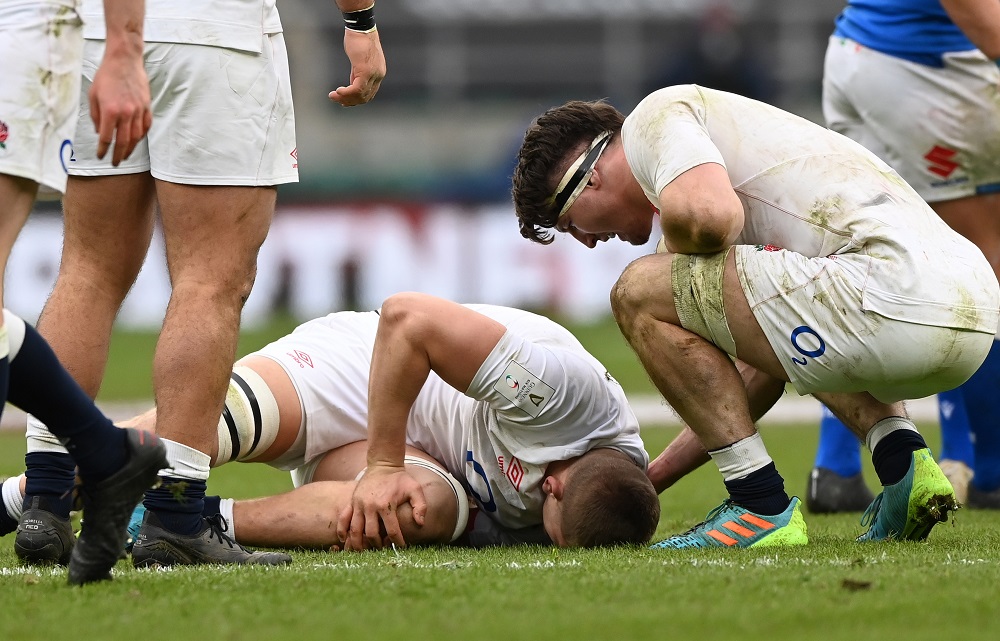Mr Deepu Sethi
Consultant Orthopaedic Surgeon
Specialist expertise: Knee Conditions, Sports Injuries, Orthopaedics, Knee, Knee Arthroscopy, ACL Surgery, Meniscal Surgery, Arthritis, Knee Replacement, PCL Surgery, Knee Injuries, Cartilage Injuries.
Anyone watching the England vs. Italy Rugby Six Nations match on Saturday 13th February would have cringed at the site (and sound) of Jack Willis sustaining a massive knee injury. Minutes after scoring a try, England flanker Jack Willis was stretchered off with what looked like a serious knee injury. How was the injury sustained, how bad is his injury and how long will his recovery take? Mr Deepu Sethi, Consultant Knee Surgeon at OneWelbeck Orthopaedics, looks at the various diagnostic and treatment options available.

Willis sustained his injury after he was turned at a ruck, where his leg was forced into an unnatural ‘valgus’ direction which would have almost certainly damaged his Medial Collateral Ligament (MCL). However, looking at images, it is very possible that he would have sustained an injury to other ligaments around the knee, including his cruciate ligaments (Anterior Cruciate Ligament – ACL, and Posterior Cruciate Ligament – PCL). Often meniscus cartilage is also torn during these injuries.
Knee ligament injuries are very common in modern rugby, especially as players have become faster and stronger. Unfortunately, Jack Willis is no stranger to knee injuries, having previously sustained an ACL tear in 2018. The most commonly-injured ligaments are the ACL and MCL.
It is important that a thorough history is taken about the injury. The mechanism of injury would give big clues to doctors treating Jack so to which parts of the knee would be injured. Often video footage of the event is very useful. Examination of the knee also gives us many clues as to which structures have been injured, and doctors would carefully assess the integrity of each ligament in turn. Finally, modern MRI scanners are very accurate at assessing injuries to structures around the knee, including ligaments and meniscus cartilage.
Ligament injuries and meniscal injuries are treated slightly differently.
Ligaments: Isolated MCL injuries very often heal by themselves and don’t always require surgery. However, the patient would need a knee brace and an extensive period of rehabilitation before being fit to return to sport. In professional athletes, ACL injuries often do require surgery, with the aim of the surgery being to restore stability to the knee, which is required for high-speed changes of direction and pivoting.
Meniscal injuries: Where possible, an early repair of a torn meniscus can give the best long-term outcomes and this is often done at the same time as other ligament surgery. However, not all meniscus tears can be repaired, in which case they may be trimmed.
Depending on the extent of the injury and amount of treatment required, professional athletes can be looking at an absolute minimum of 9 months of recovery before they return to sport. However in practice this is often a significantly longer time period.
Here at OneWelbeck, we have a team of specialists, state of the art facilities and diagnostics, and highly competitive financial packages for self-funding patients as well as those with private health care.
OrthopaedicsMr Deepu Sethi is a Consultant Knee Surgeon at OneWelbeck Orthopaedics. He has particular expertise in sports injuries, complex ligament repair / reconstruction (including anterior cruciate ligament (ACL) surgery), meniscal surgery and repair, joint preservation surgery as well as both partial and total knee replacements. To schedule a consultation with Deepu, please call +44 (0)203 653 2002 or email bookings.orthopaedics@OneWelbeck.com.